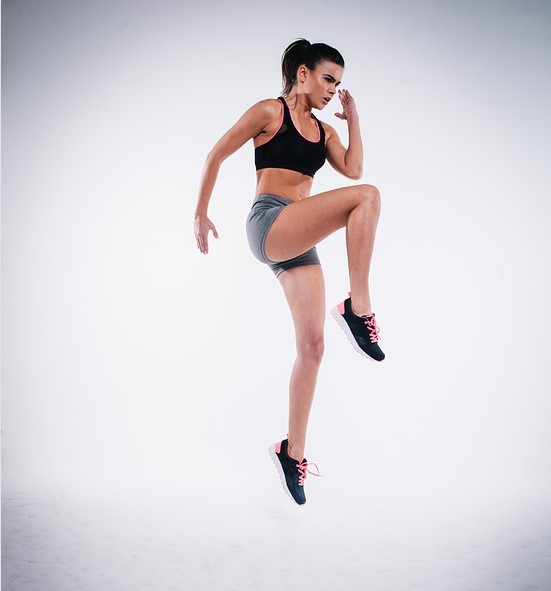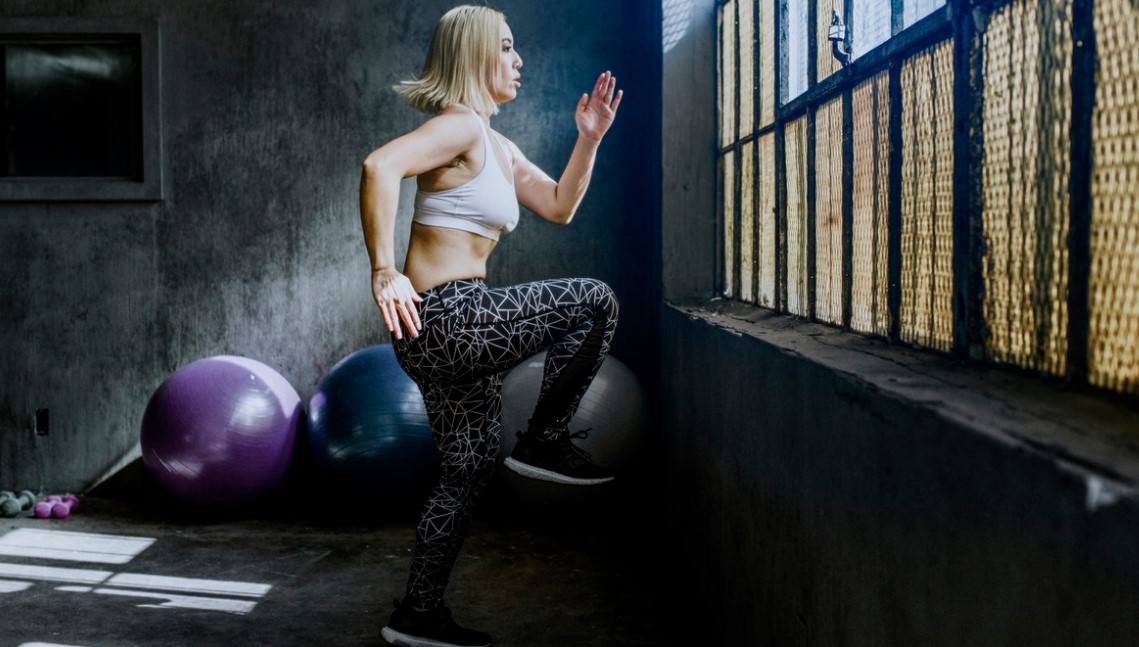Last Updated on October 27, 2022 by admin
If you are relatively new to the world of fitness and athletic training, you may find yourself hesitant to ask this question for fear of sounding like a novice: what is plyometric training?
“Plyometric” sounds like the ultimate fitness buzzword, reserved for use by CrossFit champions or Olympic trainers. It sounds like it would roll off the tongue of someone who knows the best ingredients for your protein shake or the best stretches to relieve sciatica.
However, it is both a word and a form of exercise that everyone can embrace.
Plyometric is just a fancy way to refer to jump training. That’s right: exercises that include jumping motions. Like the same jumping jack you learned as a child or the burpees that made you dread your 6 a.m. workout class today, plyometric exercises are simple, effective, and powerful.
With that as our jumping-off point, we will look at why jump training is growing in popularity, with athletes and coaches embracing these simple techniques that typically require no equipment or special skills. We will follow that with eight exercises you can add to your own training program right away.
How Can I Benefit from Jump Training?
By adding plyometric elements to your workout and training routines, you can benefit in numerous ways. These exercises are beneficial because they create calorie burn and enhance cardiovascular function, which is always helpful in terms of our overall health.
Jump training exercises also work in very specific ways to enhance particular abilities. If you regularly participate in a sport or hobby that includes running, jumping, or kicking, your performance will most certainly be enhanced and improved by plyometric training.
While the idea of “jumping exercises” leads some to believe they are focused on the legs’ strength, these are designed to be full-body exercises that tone all muscle groups and can improve your stamina in all physical fitness. Plyometric exercises can increase agility, speed, and balance.

The benefits of plyometric training are best understood in terms of thinking about the way they stretch muscles. These exercises utilize something described as the “stretch-shortening cycle.”
This cycle involves a sequence of contractions: first, the muscles are shortened in concentric contractions, and then the muscles are stretched in eccentric contractions. The result is strengthened muscles and enhanced abilities when it comes to jumping higher, running faster, and changing direction quickly.
Plyometric training could bring you a faster time in that next half marathon, a championship season in your doubles tennis league, or even bragging rights at the neighborhood basketball game.
What Extra Precautions Should I Consider with Jump Training?
A plyometric training routine is only advised for someone who is already physically fit and works out regularly. If you do not have a regular exercise routine or have other health considerations, you should discuss a fitness plan with your doctor first. This is not to say you will never be able to incorporate jump training, but as the old adage goes, you must learn to walk before you run (or jump in this case).
Even those in top physical condition also need to approach jump training with caution to avoid injury. Plyometric exercises can cause stress to joints, and the best approach is to start slowly. Incorporating these exercises slowly will reduce your risk of injury.
Over a period of time, you can add more difficult exercises as you adapt to a jump training routine and build up strength and stamina. These exercises can be tough on knees and ankles, so bear that in mind if you have suffered injuries or problems with your knees and ankles in the past.
The last thing one wants while trying to improve strength and stamina is an injury that will set you back and prevent you from exercising. This is why it is incredibly important to use caution when trying new exercises, especially plyometric training.
Your physician’s advice and guidance from a personal trainer or certified fitness coach can be invaluable in developing the best plan for your fitness level. Additionally, working out with a trainer or other athletes creates an opportunity for someone to observe your form to ensure you follow the proper techniques to avoid injury.
Sometimes athletes can be their own worst enemy, exerting themselves in ways that can lead to tears or sprains or other injuries that could be prevented by the use of proper form.
You should incorporate plyometrics into your workouts two to three times per week for best results.
Do I Need Special Shoes for Jump Training?
Those who are new to plyometric training programs often wonder if they will need a special kind of shoe. The good news is that plyometric training can be done with no special equipment and the workout shoes you already own.
However, if you want to invest in a good training shoe, certain models are ideal for jump training, especially if you are going to incorporate these exercises into your lifestyle regularly.
A “training shoe” differs from a running shoe in terms of where the shock is absorbed. Running shoes are specifically designed to absorb heel shock, whereas a training shoe is built to cushion the front part of the foot. It absorbs more of the shock that is felt when you land on your toes.
While you want support from a shoe while performing plyometric exercises, you do not want to be weighed down, either. So training shoes that are built to be durable yet extremely lightweight are ideal in this scenario.
The New Balance cross trainer offers just the right amount of lightweight cushion for your jump training exercises and comes in everything from basic black to “energy lime.” It is well ventilated and comfortable while offering enough support to protect your feet from the shocks associated with landing.
For those willing to spend a little more on a training shoe, the No Bull training shoes are wildly popular for a good reason: they outshine most competitors when it comes to comfort and performance. Since entering the sports footwear market in 2015, No Bull has quickly become a favorite among trainers and athletes.

Do I Need a Plyo Box?
While we have emphasized that jump training can be done without special equipment, many athletes like to use a plyo box to challenge themselves.
There are various options available in the fitness market, with the typical wooden box you see in many CrossFit gyms or adjustable models constructed with steel. These plyo boxes come in handy for more experienced athletes who want to push themselves with box jumps and other advanced exercises.
Eight Jumping Exercises for Your Training Program
Now that you know more about plyometric exercises, you can get started with these eight exercises.
Jumping Jacks
Lifting your arms as high as possible, repeat sets of jumping jacks in with 20 seconds of work followed by 10 seconds of rest for two to three rounds (use this timing method for all of the exercises listed below). This is one of the best ways to get your heart moving and get warmed up with a familiar exercise.
Burpees
Once you are warmed up from jumping jacks, the burpees will really get your blood pumping. A burpee involves dropping into a pushup position, then as you lift up from the pushup pulling your legs forward in one jump motion, then pushing your body up off the ground (with arms overhead) in another jumping motion.
Jumping Lunge
Proper form is key as you swap right-to-left lunges with a hop in between. This can be tricky for those with knee problems, so do not dip too lowly if that is the case.
Box Jumps
If you do have a plyo box, try jumping up on to the box where you land on both feet simultaneously. To make the jump, you will need to swing both arms forward. This is an advanced move that should be approached with caution.
Butt Kickers
The name is both literal and figurative: the act of trying to kick yourself in the butt will indeed kick you in the butt! Run in place with an exaggerated extension of your legs as if you are trying to touch your foot to your backside.
Inverted Jumps
Get into a push up position and push your feet off in a side-to-side jumping motion, with the goal of raising your hips above your shoulders. This can also be done with a boxing bag that has been lowered to the floor if you find it helpful to jump over something.
Squat Jumps
Few exercises provide a better workout than squats and adding a jump to the squat takes it to a whole new level. As you raise your legs from the squatting position, push up through your feet into an explosive jump. Most people find it helpful to swing the arms back during the jump and bring them back toward the chest during the squat.
Stair Hops
Our final jumping exercise is indeed a challenge: hop on one foot up a set of stairs, walk back down, and then repeat on the other foot. Try not to lean on the railing unless you need it for balance.

